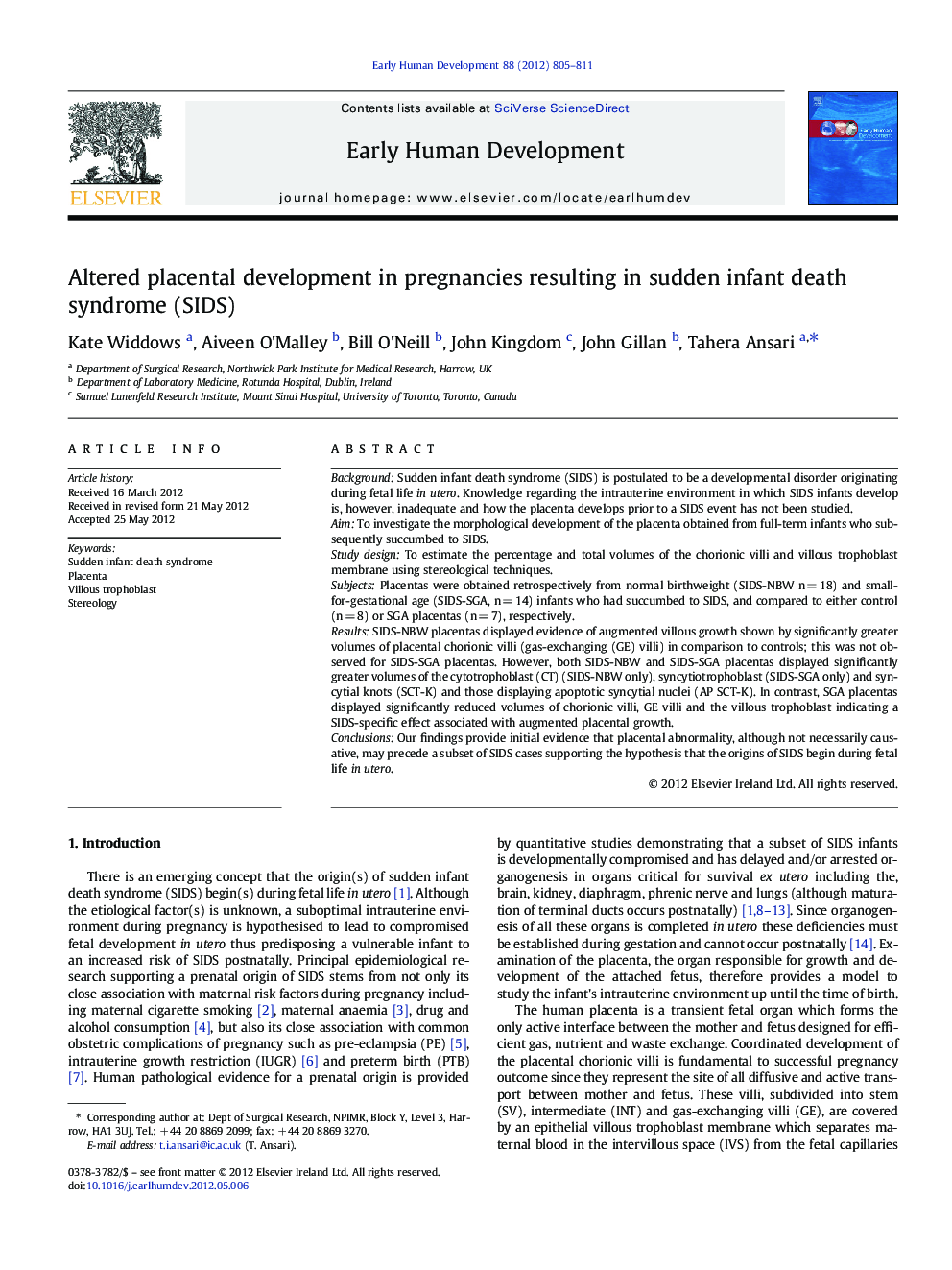| Article ID | Journal | Published Year | Pages | File Type |
|---|---|---|---|---|
| 3918369 | Early Human Development | 2012 | 7 Pages |
BackgroundSudden infant death syndrome (SIDS) is postulated to be a developmental disorder originating during fetal life in utero. Knowledge regarding the intrauterine environment in which SIDS infants develop is, however, inadequate and how the placenta develops prior to a SIDS event has not been studied.AimTo investigate the morphological development of the placenta obtained from full-term infants who subsequently succumbed to SIDS.Study designTo estimate the percentage and total volumes of the chorionic villi and villous trophoblast membrane using stereological techniques.SubjectsPlacentas were obtained retrospectively from normal birthweight (SIDS-NBW n = 18) and small-for-gestational age (SIDS-SGA, n = 14) infants who had succumbed to SIDS, and compared to either control (n = 8) or SGA placentas (n = 7), respectively.ResultsSIDS-NBW placentas displayed evidence of augmented villous growth shown by significantly greater volumes of placental chorionic villi (gas-exchanging (GE) villi) in comparison to controls; this was not observed for SIDS-SGA placentas. However, both SIDS-NBW and SIDS-SGA placentas displayed significantly greater volumes of the cytotrophoblast (CT) (SIDS-NBW only), syncytiotrophoblast (SIDS-SGA only) and syncytial knots (SCT-K) and those displaying apoptotic syncytial nuclei (AP SCT-K). In contrast, SGA placentas displayed significantly reduced volumes of chorionic villi, GE villi and the villous trophoblast indicating a SIDS-specific effect associated with augmented placental growth.ConclusionsOur findings provide initial evidence that placental abnormality, although not necessarily causative, may precede a subset of SIDS cases supporting the hypothesis that the origins of SIDS begin during fetal life in utero.
